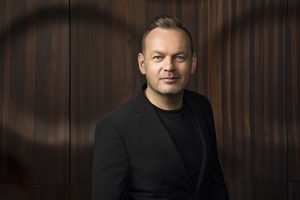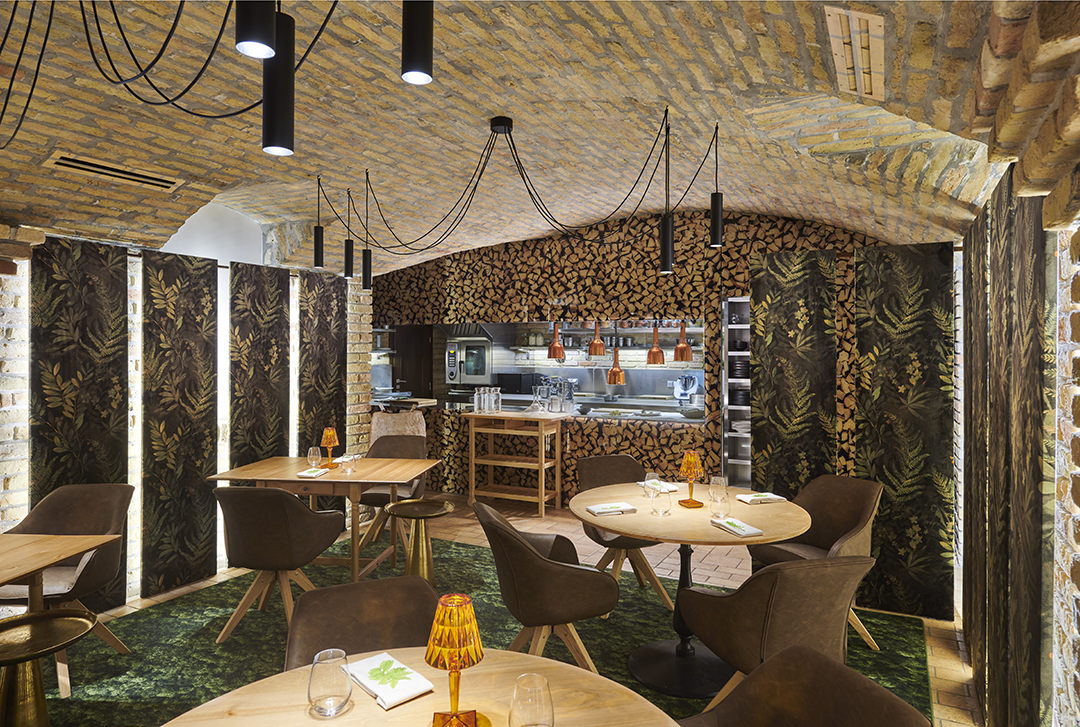Our history from the beginnings to the present
The Esterházy Castle and the Platán buildings
The lordship of Tata – the town and the neighboring villages degraded under the yoke of the Turks – was purchased by János Esterházy in 1727. The city, by the beginning of the 19th century, became the center of the lordship and one of the most beautiful towns of the country, rich in baroque-style buildings, owing to the work of the settlers, monks, famous architects and engineers invited to Tata by the count’s family.
At the beginning of the 1760s, Miklós Esterházy comissioned the young Jakab Fellner to develop a plan to raise a new, grandiose castle on the site of the Sigismund castle built in the 14th century. Due to the high costs and the death of the count, his successor, József Esterházy the 2nd rejected the realisation of the original plan, and ordered the building of a smaller and more modest estate center.
The Esterházy Castle standing on the shores of the Old Lake, with its two towers, its roof terrace and the adherent ’Small Castle’ was completed in its current form in 1776. The building, which was owned by the count’s family up until the mid-20th century, saw the arrival of several rulers like Franz Joseph and Sisi, and was the location of many historical moments, for instance the signing of the Treaty of Schönbrunn. The buildings now housing the Platán establishments used to be the homes of the count’s personnel.
After the 2nd World War the castle complex was nationalised, and for decades was used as a neurology clinic. Afterwards, it was left empty for a long time. Later, the historical buildings of Platán was purchased by the Szélvári family who established a doctor’s office and private homes there.
PLATÁN RESTAURANT AND THE CASTLE MOAT GUEST HOUSE
In 2007 the buildings, desperate for renovation, were purchased by Platán, in hopes of saving them from their inevitable decay and to keep them part of the lakeside’s cultural heritage for many years to come, using them in their old and also new functions.
Afterwards, the buildings and the surroundings of Platán Restaurant and the Castle Moat Guest House were completely renovated based on the plans of architect Anikó Markos. The reconstruction of the building and the development of the public areas surrounding were finished in 2009.
Platán Restaurant and the Castle Moat Guest House received a Hungarian Award for Estate Development in 2012 for the reconstruction of the historical monuments and its surroundings, and the restaurant got a permanent place on the gastronomical map of Hungary by becoming one of the best countryside restaurants of the country, with the help of Michelin-star chef István Pesti.
Platán was always devoted to Tata and its environment. The plane tree (’platán’ in Hungarian) planted by the Western gate of Tata Castle was brought over from Versailles by the Esterházy family in 1785, and in 2014 won the Tree of the Year award in Hungary, while earning second place in the European competition in 2015. The team of Platán proudly tends this tree to this day.
HISTORY OF PLATÁN MANOR
In the area enclosed by the castle moat and the Old Lake, between the centuries-old plane trees, stands the outbuilding of Esterházy Castle, operating as a resthouse for centuries, now the home of Platán.
In 2018 it was decided that we needed to reimagine the functions of the building, and reinvent and renovate the interiors, for which we employed one of the best Hungarian interior designers, New York Golden Key Award winner Zoltán Varró.

After six years, the renovated Castle Moat Guest House awaits its guests under the new name of Platán Manor. As mentioned before, the establishments of Platán used to be the homes of the count’s personnel. Therefore the name Platán Manor reflects on the history and mood of the location.
We established 10 rooms and a suite in the Manor, and under the reception built three salons with different functions and milieu for our guests to enjoy. These salons are characterised by an Esterházy style elegance, although some aspects also reflect the elements of the forests and water found in the artistic plating style of István Pesti.
The interiors of Platán Manor are characterised by a mixture of modern intimacy and colorful splendor. Having a gourmet breakfast, put together by chef István Pesti and his team, in the blue-and-white salon makes you feel like enjoying teatime as a guest of the Esterházy family.
The Bird Salon is reminiscent of baroque style winter gardens with its green tones and its fireplace, where even on a warm Summer day you can sit and enjoy a glass of good wine.
Zoltán Varró made some bold artistic decisions when it came to designing the Huner’s Room, the third of our salons, which is an essential part of manors everywhere. The furniture, the walls and even the ceiling is covered by green velvet, while the mirros, the antlers and the unique moss-patterned carpet envoke the mistique of the forests of Tata.
This carpet is also present in the guest rooms of Platán Manor, where the pattern on the curtains also makes you feel closer to nature.
„Platán offers a complex experience. The history of the town, the nearness of nature and the top grade gastronomy merge together in harmony. The milieu of course is just a backdrop, the emphasis is on the dishes of István Pesti.” – says Zoltán Varró.

FINE DINING RESTAURANT
Connected to the Manor is the new fine dining restaurant, which awaits our guests hungry for a sophisticated and deep gastronomical experience. In the new restaurant, following a fine dining concept, our gourmet guests can enjoy a tasting dinner, offered by Michelin-star chef István Pesti and his team.
Many describe chef István Pesti’s creations as works of art, as taste and design in his dishes merge in complete harmony. The elegant milieu of the restaurant reflects on the English Park, which was built nearby by the Esterházy family in 1783.

DEVELOPMENT OF THE TATA CASTLE MOAT AND MIRROR SPA
Following international trends, the castle moat connected to Platán Manor was also renovated. With the permission from the commission of monument protection, Zoltán Varró and his team made their plans with special attention to the symbolic castle and its environment. The spa cabins placed next to the castle walls have mirror exteriors, which reflect the medieval walls in several dimensions.
For the protection of local birds, stickers were placed on the mirror walls based on the plans of nature painting artist Szabolcs Kókay. Illustrations of birds of prey were placed on the mirrors to protect passing birds from collision.
Designer Zoltán Varró was inspired by the castle reconstructions of Malta, Valletta and Mdina when reconstructing the castle moat and designing the contemporary parks within. Similar to Malta, in Tata the goal was also to make the gardens beautiful not only for the people walking through, but also the people looking at it from above.
The finished spa’s mirror walled mobile buildings house a sauna, jakuzzi, steam room, plunge pool, massage room and relaxation areas, and have a green toned interior design reminiscent of the mysterious milieu of the Hunter’s Room in the Manor.
The buildings are connected by wooden walkways, which seamlessly fit into the landscape, and were inspired by the interior network of Tata Castle. The developments followed the guidelines for environmental protection.
